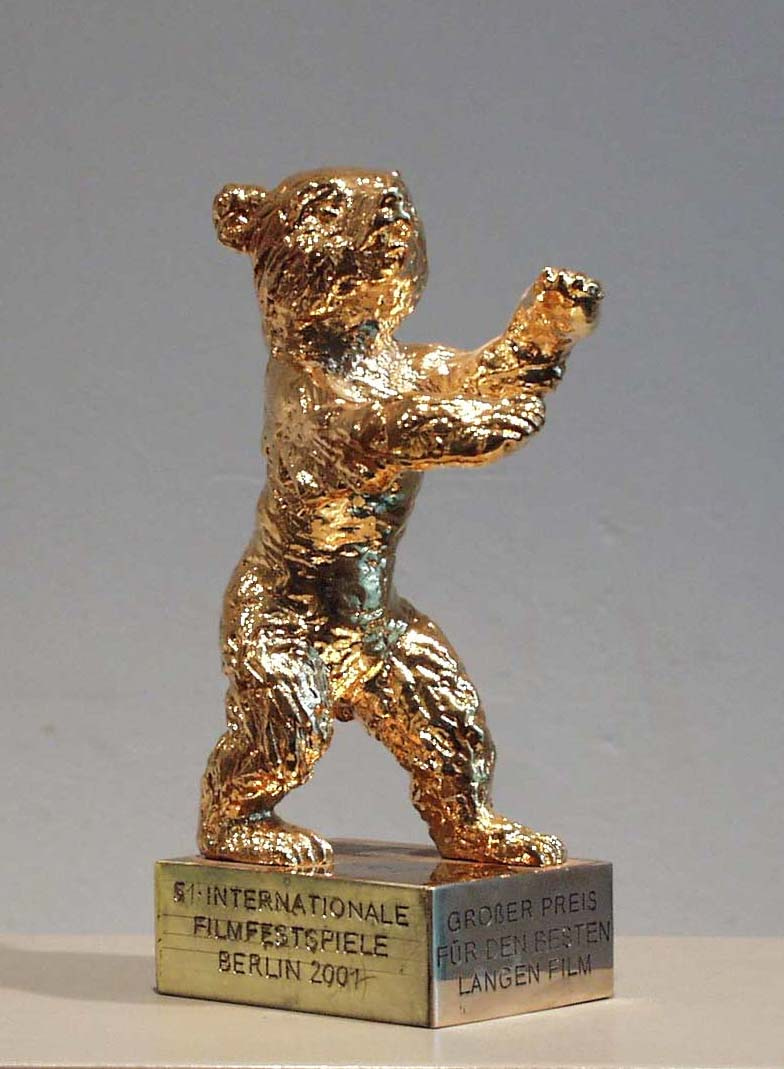
Renée Sintenis: *20. März 1888 in Glatz; † 22. April 1965 in Berlin
Renée Sintenis enjoyed great success as a young woman with her small-scale, expressive animal sculptures. Later, with the Berlin Bear, she shaped the face of the divided and later capital city - whether at the Dreilinden border crossing or as a prize at the Berlin Film Festival. She was deeply connected to the foundry throughout her life, having worked, taught and learnt side by side in the workshop.
Renée Sintenis, then still Renate Alice Sintenis, moved with her family from Neuruppin to Berlin at the age of 17 because her father had found a job at the "Kammergericht" (Court of Appeal). Her artistic streak was already pronounced at that time, she had received drawing lessons as a child and at the age of 19 she began to study decorative sculpture at the School of Arts and Crafts in Berlin. However, she soon had to abandon her studies at the instruction of her father, who wanted to employ his daughter as his secretary. However, she defied her family's wishes and stuck to her goal of becoming an artist.
In 1910, the tall, elegant young woman with the striking features modelled for Georg Kolbe, who was already one of the most important German artists at the time. Their friendship lasted for years, during which Kolbe accompanied Sintenis in her work and style development. She then began to work more purposefully as a sculptor - initially under difficult material conditions.

Side by side at Noacks
From 1913, she began working on her busts, portrait heads and animal figures in and with the Noack foundry. In a letter to Hermann Noack II, she later wrote: "Noack's father taught me chiselling and patinating. We all worked together in the foundry, ate war sandwiches and cigarettes and smoked. A sculptor can't do without a good caster, and we artists have a lot to thank the constant willingness to try, the good will and taste of this family of casters - and their love for this oh-so-difficult craft!"
Sintenis modelled with Noacks, learned from chasers and patiners and did not miss out on casting. The fluid transitions between art and craft in her daily work and the cross-fertilisation of the spheres were a decisive basis for Sintenis' work.
She exhibited at the Berlin Secession as early as 1915 and her first purchases were arranged by none other than Rainer Maria Rilke, who was convinced by Sintenis' work from the very beginning. Her life's work eventually centred on small animal figures, which were extremely popular with the public and continued to be very popular after the war.
However, her portraits and sports figures also appealed to both popular and art scene tastes - her lively, dynamic yet never pathetic design made her a brand and she also enjoyed international success during the Weimar Republic: Her works were shown in Paris, London and New York.
Dark times
In 1931, she was the second woman after Käthe Kollwitz to be appointed to the Berlin Academy of Arts and was unquestionably one of the most important representatives of sculpture in Germany. At the time, she described her work as follows: "I have never known myself whether I can do much or little or whether I can do anything special at all. I only believe it because others keep telling me and I realise the effect of my success. For me, my work is nothing more than a self-evident necessity."
National Socialism marked the beginning of a period of deprivation and loss for Sintenis. Because of her Jewish maternal grandmother, she was expelled from the academy and her works were removed from public collections. One of her works was also shown in the female exhibition "Entartete Kunst" (Degenerate Art). Nevertheless, she was not banned from her profession and was able to continue working quietly and in seclusion, albeit under extremely difficult conditions. The unexpected death of her husband and the loss of large parts of her work in a bombing raid plunged her into a deep crisis.
Fame of a Berlin artist
In the post-war period, however, Sintenis was able to build on her old successes and was honoured many times over. She remained true to her themes and her style and continued to meet with a great response. With the Berlin Bear, she created an iconic work that is an inseparable part of Berlin, be it on the motorway near Dreilinden, but also every year at the Berlinale, where her Bear is awarded as a prize.
Renée Sintenis died in Berlin in 1965 at the age of 77. Her entire oeuvre was cast by Noack until the end and even after her death - a special example of how fruitful the close relationship between foundry and artist, between art and craft can be - thus creating a unique oeuvre over generations that will remain.